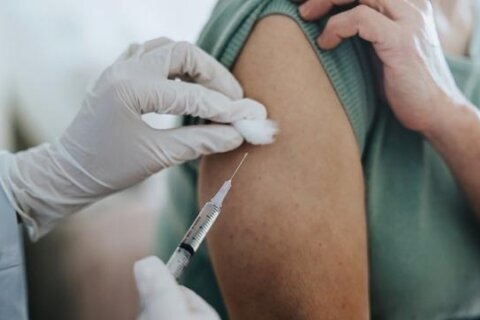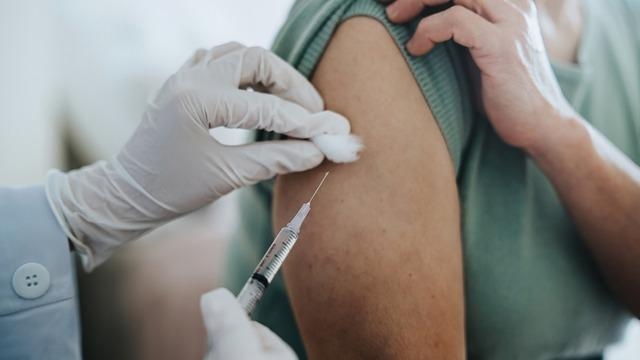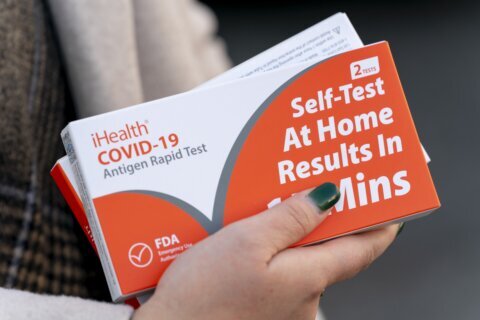
▶ Watch Video: Doctors warn COVID hospitalizations are rising
Weekly COVID-19 hospitalizations have risen by more than 12% across the country, according to new data published by the Centers for Disease Control and Prevention, marking a second straight week of this key indicator of the virus climbing.
At least 8,035 hospital admissions of patients diagnosed with COVID-19 were reported for the week of July 22 nationwide, the CDC said late Monday, up from 7,165 during the week before.
Another important hospital metric has also been trending up in recent weeks: an average of 0.92% of the past week’s emergency room visits had COVID-19 as of July 28, up from 0.51% through June 28.
The new figures come after months of largely slowing COVID-19 trends nationwide since the last wave of infections over the winter, and again mark the largest percent increases in these key indicators of the virus since December.
“U.S. COVID-19 rates are still near historic lows after 7 months of steady declines. Early indicators of COVID-19 activity (emergency department visits, test positivity and wastewater levels) preceded an increase in hospitalizations seen this past week,” CDC spokesperson Kathleen Conley said in a statement on July 25.
Conley said virtually all counties are at “low” COVID-19 hospital admission levels, below the thresholds at which the CDC recommends additional precautions to curb the virus.
Are we seeing a summer surge?
While indicators of the virus are now clearly trending up nationwide, hospitalizations for now remain far below the levels recorded at this time last year.
Previous summer waves also saw steeper increases compared to what has been seen so far this year. The U.S. is averaging 1,729 more admissions per week compared to a month prior.
In 2022, hospitalizations peaked over the summer at 44,728 admissions for the week of July 23, 2022, after a wave of Omicron infections that strained some hospitals. That was nearly 12,000 more admissions compared to the rate seen a month prior.
In 2021, a sharp increase driven by the Delta variant saw hospitalizations surge by 20,029 more from June to July, reaching 32,850 hospitalized through July 24, 2021.
“The U.S. has experienced increases in COVID-19 during the past three summers, so it’s not surprising to see an uptick,” Conley said.
Projections have differed over what the coming months will hold.
An ensemble of academic and federal modelers said last month that the “main period of COVID19 activity is expected to occur in late fall and early winter over the next 2 years, with median peak incidence between November and mid January.”
They cautioned that there were considerable differences between models within the group, with some teams projecting an additional smaller peak elsewhere in the year.
Is a new variant to blame?
Unlike previous waves, no single variant has yet emerged this summer to dominate infections nationwide.
Instead, the CDC’s recent projections estimate that a mix of descendants from the XBB variant that first drove infections last winter are now competing around the country.
Largest among these XBB subvariants are infections grouped as the XBB.1.16, XBB.1.9.1, XBB.2.3, XBB.1.6 or EG.5 strains, which each make up between 10% and 15% of infections nationwide.
Experts had previously singled out EG.5 as one of the fastest growing lineages worldwide. EG.5 is a descendant of the XBB.1.9.2 variant, with an additional mutation that might be helping it outcompete other strains.
“At this time, CDC’s genomic surveillance indicates that the increase in infections is caused by strains closely related to the Omicron strains that have been circulating since early 2022,” said Conley.
- COVID symptoms seem to never touch certain people — and researchers may have finally figured out why
It comes as health authorities have been racing to prepare for a new round of COVID-19 vaccinations this fall.
Updated vaccines are expected to be available by late September, the CDC said earlier this month, after the FDA requested that drugmakers begin producing new formulations targeting these kinds of XBB strains.
Government distribution of current supplies is due to wind down this week in advance of the update, which will also mark the switchover to a traditional commercial market for vaccines.
However, the CDC says current supplies of shots will still be shipped until September for “exceptional” situations.
“While many individuals may wait to receive a COVID-19 vaccine until the updated version is released, as it is expected to provide more robust protection against currently circulating variants, certain individuals may need or desire a COVID-19 vaccine prior to the anticipated release of the updated vaccine in the fall,” the agency said.








